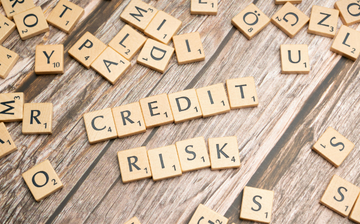
Why Every Banker Should Learn Financial Risk Management
Why Every Banker Should Learn Financial Risk Management
In today’s sophisticated financial world, risk awareness and management is no longer a luxury or just a skill. It is a necessity. The global financial crisis of 2008, recent geopolitical flare-ups, inflationary pressures, and multiple bank failures have all proven one thing beyond doubt—risk is everywhere. For investment professionals and bankers, navigating financial risk is not just beneficial. It is essential for survival, success, and sustainable growth.
The Increasing Sophistication of Financial Markets
Financial markets today are more integrated and complex than ever before. Derivatives, structured products, and decentralized finance (DeFi) are innovations that promise returns but come loaded with hidden risks. At the same time, the risk landscape is widening. Factors like market volatility, cyber threats, tightening regulations, and climate-related risks are reshaping the financial environment.
Bankers involved in lending, trade finance, and capital raising must be able to assess credit, market, and operational risks. Portfolio managers need to understand asset correlations, hedging strategies, and systemic risks. Without robust financial risk management (FRM) capabilities, decisions may be based on assumptions that could fail during times of stress.
Risk Management: A Competency, Not a Support Activity
Traditionally, risk management was seen as a standalone department. It was often viewed as a control function that said “no” when things seemed risky. That perception is now outdated. Today, financial institutions recognize risk management as a value-adding function. It supports better decision-making and helps improve return on capital.
Bankers must consider borrower risk, industry exposure, and macroeconomic shocks. Investment professionals also need to know how to diversify portfolios, apply Value-at-Risk (VaR), and conduct stress testing. The tools provided by financial risk management course enable professionals to:
- Measure possible losses.
- Allocate capital more efficiently.
- Make decisions aligned with the institution’s risk appetite.
- Prevent potentially disastrous outcomes.
Risk Expertise
Regulators have become tougher since the 2008 global financial crisis. Regulatory frameworks such as Basel III, Dodd-Frank, MiFID II, and the upcoming Basel IV demand strict compliance. They cover capital adequacy, liquidity management, stress testing, and detailed disclosure requirements.
Professionals without knowledge in financial risk are at a disadvantage—not just in compliance, but in aligning business practices with regulatory expectations.
For example, a banker who understands how risk-weighted assets (RWA) impact capital requirements can structure loans in more profitable ways. Similarly, investment professionals who follow regulation changes can anticipate how those changes might impact asset classes, credit ratings, or liquidity in the market.
Technology Is Paradigm Shifting the Risk
Digital transformation in banking and investment is progressing at a rapid pace. Risk management itself is evolving through the use of AI, machine learning, algorithmic trading, and blockchain technologies. But the effectiveness of these tools depends on the professionals managing them.
A basic understanding of financial risk is essential. Professionals must be able to interpret model outputs, recognize their limitations, and control unintended consequences. Operational risks related to technology, model risks, and cyber risks have now reached the boardroom level.
With financial risk management knowledge, bankers and investors are better equipped to responsibly adopt fintech, utilize data analytics, and manage risk modeling.
Professional Development and Competitiveness
From an individual career perspective, financial risk management skills are a powerful differentiator. Employers increasingly seek professionals who combine technical knowledge with strategic insight.
A solid understanding of financial risk:
- Enhances collaboration between risk, finance, and business units.
- Opens pathways to top leadership positions.
- Enables strategic contributions to innovation and business direction.
Investment professionals who can clearly define a portfolio’s risk profile, or bankers who can manage loans through difficult times, are invaluable to their organizations.
Real-World Examples
Mismanaged risks have led to the downfall of major financial institutions such as Credit Suisse, Silicon Valley Bank, and Archegos Capital. These weren’t just operational failures—they reflected a lack of timely, informed, and risk-based decision-making.
In contrast, some institutions weathered volatile conditions by practicing strong risk management. For example, certain international banks exited high-risk markets or adjusted their capital structures proactively. These decisions weren’t purely instinctual. They were based on accurate risk analytics and thoughtful planning.
Risk Management: An Investment Worth Making
Studying financial risk management isn’t just about passing exams or getting certified. It’s about developing a mindset. Risk managers think in probabilities, consider worst-case scenarios, and focus on mitigation strategies. This kind of thinking is invaluable—whether you’re planning a merger, launching a new fund, or entering a new market.
FRM courses typically include:
- Market, credit, operational, and liquidity risk.
- Quantitative tools such as VaR, stress testing, and Monte Carlo simulation.
- Risk-adjusted performance measures.
- Regulatory frameworks and compliance.
- Emerging risks like ESG and cybersecurity threats.
With this knowledge, professionals can bridge the gap between technical risk analysis and high-level strategic decisions.
GRMI: An Entrance to Elite Risk Education
The Global Risk Management Institute (GRMI) offers an ideal platform for those looking to build or advance their careers in risk management. GRMI is committed to producing industry-ready professionals who are both technically sound and practically skilled.
The programs at GRMI are crafted in collaboration with leading practitioners. The curriculum is rigorous, yet highly relevant to real-world applications. Whether covering core principles or case-based scenarios, students gain a deep understanding of how risk shapes every corner of financial services.
GRMI also emphasizes hands-on experience, leadership training, and corporate exposure. Its holistic approach ensures that graduates are not just job-ready but industry-prepared. With partnerships across leading firms, students benefit from both academic excellence and career guidance.
Conclusion
Risk is not going away—it is only evolving. In a world of increasing complexity, financial risk management stands out as a cornerstone of stability, performance, and trust. Whether you’re a banker, an investor, or a finance professional, learning how to manage risk is no longer optional. It’s your path to sustainable growth, strategic leadership, and lasting impact.
Institutions such as the Global Risk Management Institute (GRMI) provide industry-relevant education and hands-on experience for individuals looking to build a future in this changing environment. By bridging the knowledge gap between textbooks and practical implementation, GRMI equips professionals to lead with assurance in high-impact, high-risk situations.
You may also like

Top Benefits of Doing a PG Degree After Graduation

What Are IT Courses?


